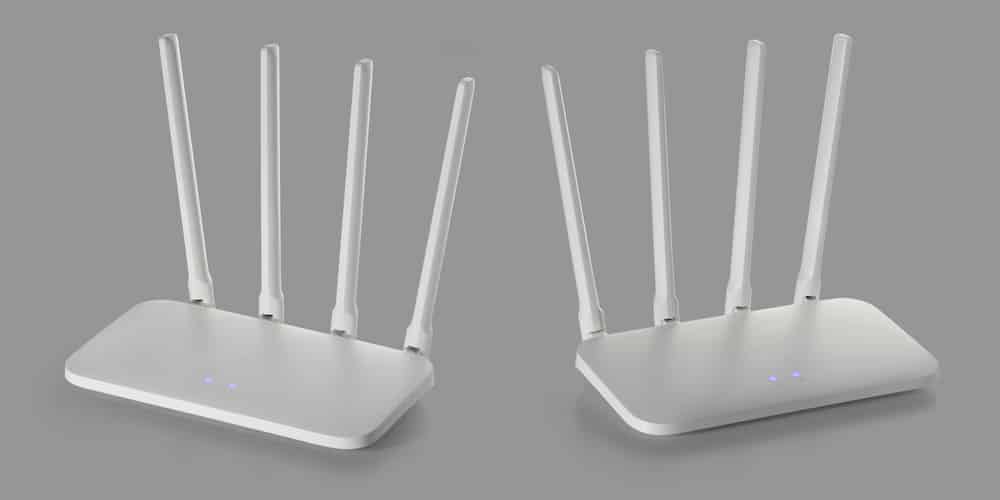RemoteIoT: Bypassing Router MAC Filtering - A Complete Guide
Is it possible to unlock the full potential of your Internet of Things (IoT) devices, managing them from anywhere in the world, even when your home network seems locked down? The answer is a resounding YES!
In today's increasingly interconnected world, the ability to remotely access and control our devices is no longer a luxury, but a necessity. RemoteIoT technology offers this capability, allowing you to monitor and manage your IoT devices irrespective of physical location. However, many users encounter hurdles when trying to integrate RemoteIoT behind a router, especially when security measures like MAC address filtering are in place. This guide provides a comprehensive roadmap, empowering you to configure and use RemoteIoT securely and efficiently, without the need for MAC address modifications. Understanding how to navigate these networking complexities is paramount to optimizing device performance and achieving seamless connectivity. This article cuts through the technical jargon to provide a clear understanding of the methods available to you, whether you're a tech-savvy individual or a newcomer.
Before we delve into the practical steps, it's important to establish a firm foundation. A solid understanding of networking basics will significantly aid you in configuring and maintaining your RemoteIoT setup.
| Concept | Description |
|---|---|
| IP Address | A unique numerical label assigned to each device connected to a computer network that uses the Internet Protocol for communication. It's essentially a device's digital address. |
| Subnet | A logical subdivision of an IP network. Subnets are used to break down large networks into smaller, more manageable segments, improving efficiency and security. |
| Ports | Virtual endpoints used by applications to send and receive data over a network. Different applications use different port numbers for communication (e.g., HTTP uses port 80). |
MAC filtering, a network security mechanism, functions by controlling access based on the Media Access Control (MAC) address of each device attempting to connect. This feature, prevalent in modern routers, serves as a gatekeeper, allowing only devices with approved MAC addresses to join the network. While this provides an added layer of security, it can present a challenge for those seeking to remotely connect devices without altering their MAC addresses. It is an essential security measure for network administrators to maintain control over which devices are allowed on the network.
Consider how a router operates with MAC filtering enabled: When a device attempts to connect, the router scrutinizes its MAC address. If this address is not present in the router's pre-approved list, access is denied. This setup effectively prevents unauthorized devices from gaining entry but requires an alternative approach if you wish to use RemoteIoT without directly changing your device's MAC address.
Fortunately, you are not restricted to simply modifying MAC addresses to bypass MAC filtering. Several innovative approaches can be employed, enabling you to establish a seamless RemoteIoT connection without directly altering the MAC address of your device. The following methods provide viable solutions for creating a fully functional setup, ensuring your devices can communicate effectively.
Using Static IP Addresses
Assigning a static IP address to your RemoteIoT device offers a strategic means of circumventing MAC filtering. By configuring a fixed IP address, you guarantee that the device consistently connects to the network using the same address. This consistency is crucial, as it allows you to create specific rules within your router's settings. This approach simplifies management because the device always operates under the same network configuration.
Configuring Router Whitelisting
Some routers provide the option to whitelist specific devices based on their IP addresses, instead of their MAC addresses. This provides a more versatile way to manage network access. By whitelisting devices via IP, you can incorporate new RemoteIoT devices into your network without needing to modify the MAC address settings of your existing devices.
Port forwarding is an essential step, facilitating the crucial communication between your RemoteIoT devices and the external network. By configuring port forwarding on your router, you effectively guide incoming traffic to the exact device on your local network. This process ensures that requests coming from outside your network are directed to the appropriate device, enabling it to function remotely.
Steps to Set Up Port Forwarding
- Access Your Router's Admin Panel: Typically, you can do this by entering your router's IP address into your web browser. This address is often found in your router's documentation or on a sticker attached to the router itself.
- Navigate to the Port Forwarding Section: The exact name of this section may vary depending on your router's make and model, but it's usually found under the "Advanced" or "Security" settings.
- Specify the Port Numbers Required by RemoteIoT: RemoteIoT devices typically use specific port numbers to communicate. You will need to find the port numbers required by your specific RemoteIoT device. These are often listed in the device's documentation or setup instructions.
- Assign the Port to the IP Address of Your RemoteIoT Device: Enter the IP address you previously assigned to your RemoteIoT device (using a static IP). This will tell the router which device on your local network should receive traffic on the specified port.
- Save the Settings and Test the Connection: Save your port forwarding settings, and then test to ensure the configuration works as intended. You can do this by attempting to access your RemoteIoT device remotely.
Dynamic DNS (DDNS) is a crucial service for RemoteIoT devices because it simplifies remote access, regardless of a changing IP address. DDNS maps a fixed domain name to a dynamically changing IP address. This means you can access your devices using a memorable domain name, even if your internet service provider changes your IP address.
Benefits of Using DDNS
- Easy Access: Allows you to access your RemoteIoT device from anywhere in the world using a consistent domain name.
- Simplified Management: Eliminates the need to remember complex IP addresses.
- Automatic Updates: Automatically updates the domain name when your IP address changes.
Security is paramount in any RemoteIoT setup. Bypassing MAC filtering and configuring port forwarding, while essential for connectivity, can inadvertently expose your network to potential security risks. Therefore, it's critical to implement robust security measures to protect your network from unauthorized access and potential threats. Careful consideration must be given to the security implications of this type of configuration.
Best Practices for Secure Connections
- Strong Passwords: Always use strong, unique passwords for your router and RemoteIoT devices. This is your first line of defense against unauthorized access.
- Encryption: Enable strong encryption protocols such as WPA2 or WPA3 on your router. These protocols encrypt the data transmitted over your network, making it more difficult for attackers to intercept and decipher.
- Regular Updates: Regularly update your router's firmware and the software on your RemoteIoT devices to patch any known vulnerabilities. Software updates often include critical security fixes.
- Access Control: Limit access to your network to only trusted devices and users. Review and manage the list of connected devices regularly.
Even with careful planning and configuration, issues may arise when integrating RemoteIoT behind a router. Identifying and resolving these common problems is essential for a smooth, functional remote access experience.
Troubleshooting Tips
- Device Not Connecting: Double-check the IP address and port settings. Ensure that the IP address assigned to the RemoteIoT device is correct and matches the port forwarding configuration. Verify that the device has an active internet connection.
- Slow Connection Speeds: Network congestion or bandwidth limitations may be the cause of slow connection speeds. Consider testing your internet speed and checking the bandwidth usage of other devices on your network.
- Security Alerts: Regularly monitor all your devices and ensure all have the latest security updates installed. Be proactive and investigate the reason for any security alerts you receive.
Several tools and software can significantly streamline the process of setting up and managing RemoteIoT devices behind a router. These tools can not only simplify the configuration process but also enhance the functionality and improve the overall experience.
Popular Tools
- DD-WRT: A custom firmware for routers. DD-WRT offers advanced features like port forwarding and DDNS, greatly enhancing the functionality of the router.
- No-IP: A popular DDNS service providing free domain names and automatic IP address updates for your devices.
- PortCheck: A useful tool designed to verify whether your port forwarding settings are working correctly.


Detail Author:
- Name : Mrs. Elmira Dibbert V
- Username : mayer.pauline
- Email : jaylin76@langosh.biz
- Birthdate : 1992-08-29
- Address : 217 Hyatt Burg West Charles, SC 47155-4960
- Phone : 904.218.3586
- Company : Waters, Haag and Bergstrom
- Job : Occupational Health Safety Technician
- Bio : Debitis inventore ut natus magni labore. Aut id ut repellendus unde doloribus aut aut. Quasi magni in molestias et dolores est sed.
Socials
twitter:
- url : https://twitter.com/kenton_official
- username : kenton_official
- bio : Nihil eveniet molestiae eligendi expedita. Iusto tempore voluptatem beatae molestiae corrupti dolorem praesentium. Quia omnis in dolorem voluptate sit.
- followers : 355
- following : 149
facebook:
- url : https://facebook.com/kgreenholt
- username : kgreenholt
- bio : Architecto ea et repudiandae quo. Neque architecto nemo et quia ut nisi.
- followers : 6546
- following : 119
tiktok:
- url : https://tiktok.com/@greenholtk
- username : greenholtk
- bio : Et repellendus amet autem necessitatibus eos quisquam ipsam.
- followers : 6995
- following : 1004